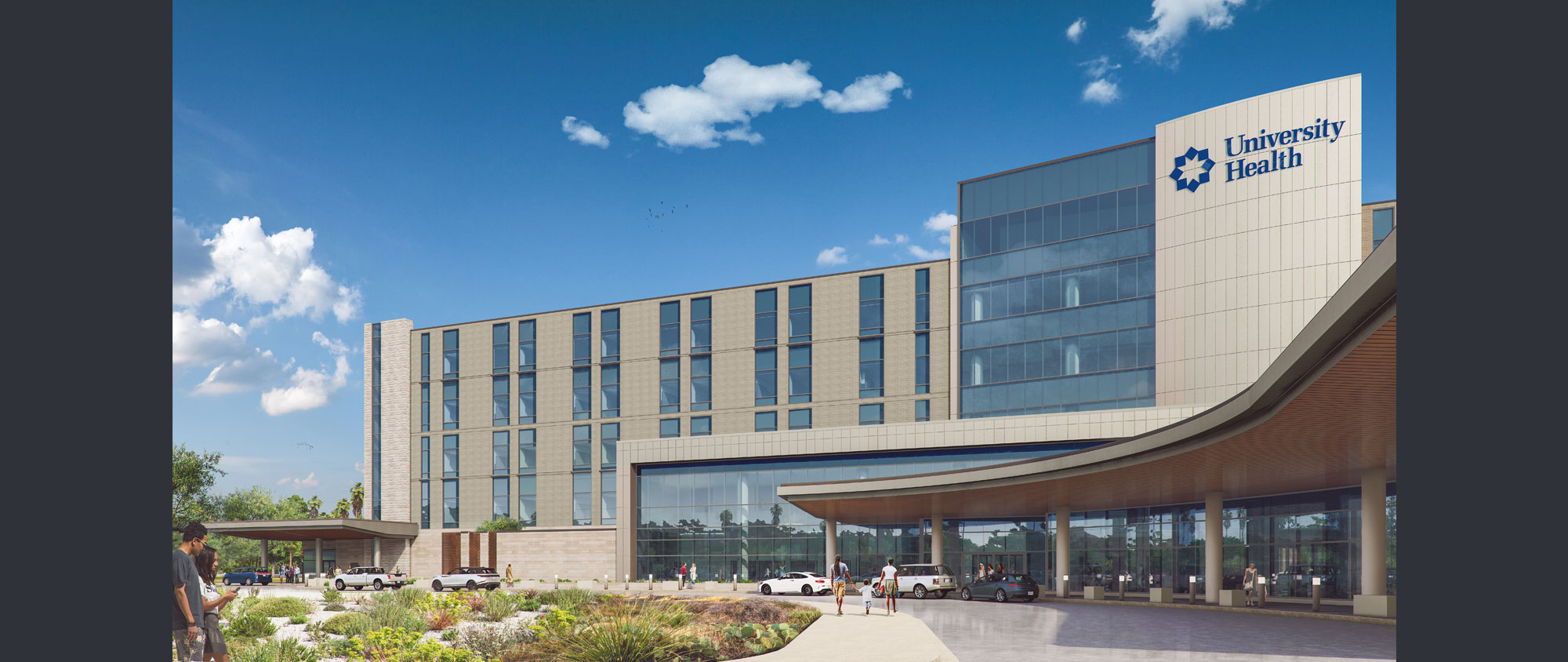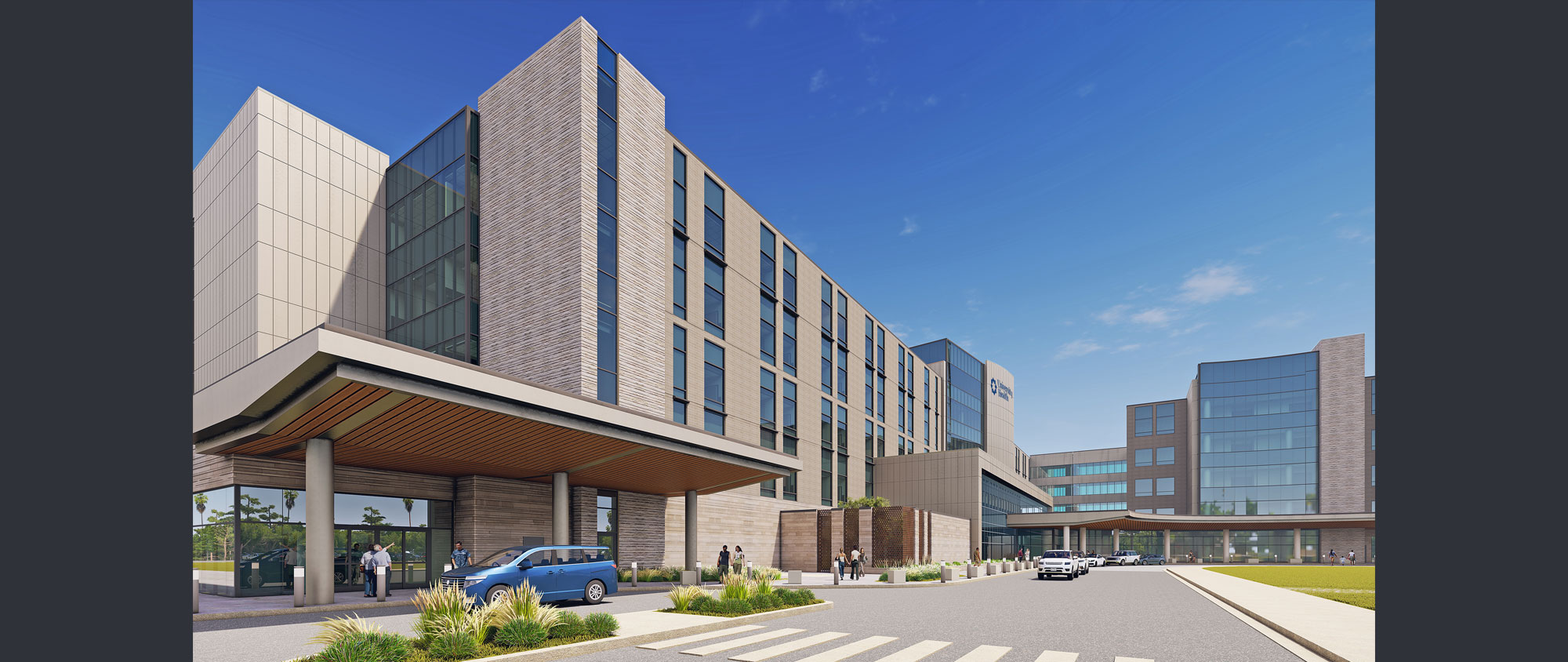Construction is currently in progress for the University Health Palo Alto Hospital and Retama Hospital campuses, each totaling a 604,561-square foot facility, which are two community prototype hospitals developed through a partnership between ESa (associate architect for design) and Marmon Mok (architect-of-record).
To better address the needs of the community, University Health acquired two tracts of strategically located land—a site near Texas A&M University-San Antonio in southern Bexar County and the Retama Park site in the City of Selma, northeastern San Antonio. These purchases lay the foundation for smaller community-focused hospitals that can more efficiently serve the community’s medical needs. Each site will include:
- A community hospital, including four floors and 167 beds, with an estimated footprint of 604,561 square feet. One additional floor will be included as shell space for future development.
- An adjoining medical office building, integrated with the hospital, will include physician offices for employed and community physicians as well as other clinical services and administrative space.
University Health’s vision was to create one prototype hospital design for two sites. The design team worked closely with University Health leadership to develop a program based on anticipated community volumes, best practices and industry benchmarks. Key building blocks such as patient rooms, operating rooms, emergency exam rooms, patient unit cores, other support spaces such as medication rooms, clean supply rooms, etc., were standardized across all departments. Industry benchmarks were used to right-size these key building blocks and departments. The design was developed with a top-down approach with University Health leadership providing the vision, operational input and confirmation of the project’s design. Departmental leaders and other organizational subject matter experts were included at key moments within the design process. This approach was critical in maintaining the prototype nature of the design and aligning with the culture and vision University Health leadership had for the two community hospitals.
With an eye to the future, the hospital’s design has both horizontal and vertical expansion zones growth paths. Major clinical departments such as surgery, imaging, and emergency were strategically located on the first floor, so that each department could grow incrementally minimizing disruption to existing operations. The patient bed tower is structured for two additional floors. The integrated medical office building has also been designed so that someday, if needed, hospital healthcare space can be located within this building’s footprint.
The Palo Alto and Retama Hospitals are being designed as a cutting-edge, full-service medical facilities. They will feature an emergency room catering to both adults and children, labor and delivery suites, a neonatal intensive care unit (NICU), operating rooms, intensive care beds, and private patient rooms for patients requiring medical and surgical care. Additionally, an adjoining medical office building will enhance accessibility for South Side community by offering family medicine services and a broad spectrum of specialized care options.










